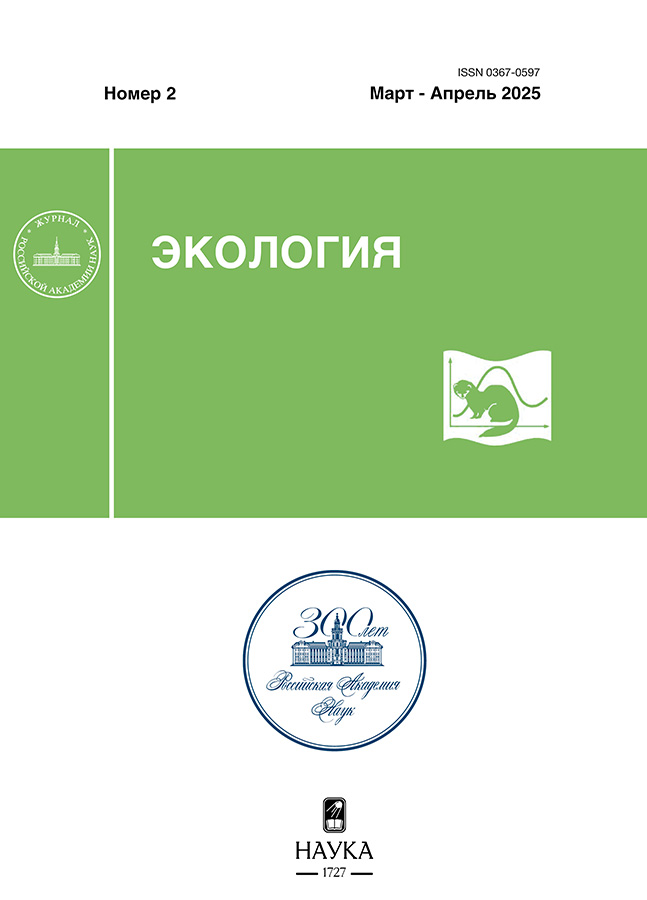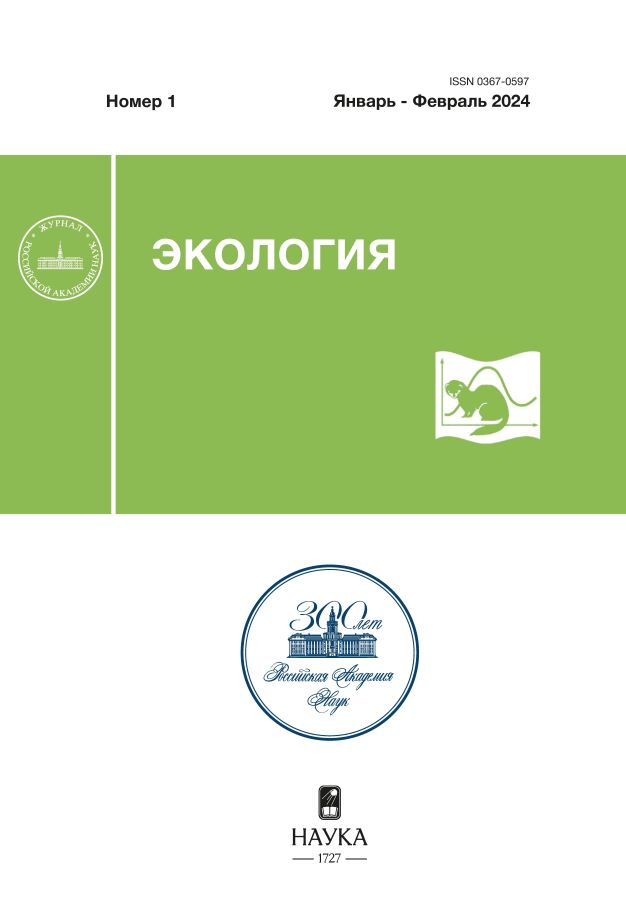No 1 (2024)
Articles
Dynamics of vegetation of Central Yamal in the holocene
Abstract
The paper presents new paleobotanical data in combination with the results of radiocarbon dating obtained from organomineral deposits of the northern shore of Lake. Pechevalavato (70°13’22.3” N, 71°50’57.6” E) in the Seyakha river basin and characterizing the dynamics of vegetation in the northern part of Central Yamal in the Holocene. It has been established that in the Early Holocene (10.2–8.7 thousand years ago) in Yamal, tree-shaped birch (Betula sect. Betula) grew no less than 400 km north of the modern northern limit of distribution of Betula pubescens ssp. tortuosa. Favorable conditions for the existence of birch woodlands at this time were due to the higher temperature of the growing season, exceeding by approximately 3–4 °C the modern parameters of the warmest month of the summer season. At the end of the Early Holocene (after 8.5 thousand cal BP), forest vegetation began to degrade, and open landscapes with diverse plant communities of the subarctic tundra and single trees in the river valley spread. About 6.5 thousand cal BP the northern subarctic tundra began to form the zonal appearance of the study area in climatic conditions close to modern ones.
 3-13
3-13


Relic populations of Ranunculus kamtschaticus DC. (Ranunculaceae) in the Urals
Abstract
In the context of global climate change, it is of great interest to assess the adaptive capabilities of the glacial relics of the Urals and the prospects for their conservation. Ranunculus kamtschaticus DC. has a high degree of ecological specialization for high mountain conditions and extremely low plasticity. It is preserved in the midlands of the Urals on individual peaks. The life form of R. kamtschaticus in the Ural fragment of its range is a brush-rooted non-turf polycarpic grass with erect assimilating shoots of a non-succulent type. The variability of the development of its shoots and shoot systems under the influence of climatic and weather conditions is shown, the preferential development of shoots with an incomplete development cycle is noted. Irregular fruiting, a long period of germination, and rapid loss of seed germination reduce the competitiveness of R. kamtschaticus in the Urals and its ability to colonize new territories. Threat assessment according to IUCN criteria showed that populations of the species in the Komi Republic and Sverdlovsk region are in critical condition.
 14-21
14-21


Horizontal pattern of trees in the cenopopulation of Larix gmelinii (Rupr.) Rupr. in the forest tundra ecotone on the Taimyr Peninsula
Abstract
The features of the horizontal spatial structure of multi-aged open forests of Gmelin larch (Larix gmelinii (Rupr.) Rupr.), forming the northern limit of tree vegetation in the forest-tundra ecotone in the eastern part of the Taimyr Peninsula, are considered. It was found that all studied tree stands are characterized by a mosaic structure, in which areas occupied by woody vegetation alternate with open spaces, the area of which ranges from 37 to 50%. In all cases, the composition of the tree layer includes both single trees and their aggregations (biogroups), share of which varies from 17 to 32%. Pair aggregation of trees predominates in biogroups, amounting to 83%. The predominance of the random nature of the location of trees in the formation of the horizontal pattern has been snown, but the specific type of spatial distribution is also determined by the stage of ontogenesis in which the cenopopulation is located.
 22-33
22-33


Accumulation and localization of metals in lichen thallus under conditions of dust pollution during open mining of boxite deposits
Abstract
We studied the accumulation and localization of metals in the foliose lichens Lobaria pulmonaria, Hypogymnia physodes and Peltigera aphthosa, living in the impact zone of the Sredne-Timansky bauxite mine. A significant accumulation of Al (16–19 g/kg), Fe (16–20 g/kg) and Ti (0.3–0.7 g/kg) by thalli was revealed. From 29 to 82% of the total content of these metals is localized in dust particles weakly attached to the surface of the thalli. The total proportion of intra- and extracellularly bound Al, Fe and Ti did not exceed 11%. 15–56% of these metals were found in the residual fraction. An increase in the content of Cu, Pb, Co and Ni was detected in thalli collected in the impact area. It has been shown that the localization of metals in thalli depends both on the element under consideration and on the morphological and anatomical characteristics of the thalli: in L. pulmonaria, fine mineral particles were localized on the surface of the thalli; in the thalli of P. aphthosa, which do not have a lower cortex, mineral inclusions were found throughout the entire thickness of the thalli.
 34-45
34-45


Generation abundance dynamics of peled at the lower reaches of the Ob’ River in 1981–2021
Abstract
The generation abundance of peled has been assessed at the lower reaches of the Ob’ River. Based on data on the number of larvae migrated downstream from spawning grounds, obtained in 1981–2021 on the main spawning rivers, current population structure of peled at the lower reaches of the Ob’ River is described, the influence of anthropogenic factors and of the water content of the Ob’ River floodplain on peled reproduction is analyzed. The Severnaya Sos’va River definitely plays a decisive role in the reproduction of peled. In recent years, there has been an increase in the contribution of the Voikar and Sob’ rivers. Seven-year cycles have been identified (between the peaks in the larvae number); their maximums coincide with the peaks of water content at the lower reaches of the Ob’ River with a 1-year lag, which supports the world’s largest river peled population abundance. The presence of such cycles makes it possible to predict phases of high fish abundance. An equation describing the dependence of the generation size of peled at the lower reaches of the Ob’ River on the average water level of Ob’ River in June–August at the Salekhard gauging level in the previous year is proposed.
 46-55
46-55


Red fox skull size variability along the Ural’s meridian: Bergmann’s rule or the optimum rule?
Abstract
Changes in the skull size of the red fox (Vulpes vulpes L.) along the eastern macroslope of the Ural Range from the forest-tundra to the steppe are analyzed. The sizes varied from minimum in the north to maximum in pre-forest-steppe pine-birch forests. Further south, the size of the skull decreased again. The average fox population density changed similarly. Based on these data, it was concluded that the sizes change in accordance with the optimum rule, and not with Bergman’s rule. Probably, microevolutionary adaptations to living conditions are influenced by general factors that influence both body size and the population density of the species.
 56-64
56-64


Short communications
Low resistance of native species of shrubs and bushes on Sakhalin Island to winters with little snow
 65-70
65-70


Glass or plastic? Influence of funnel material on the efficiency of nematode extraction using the Baermann method
 71-74
71-74













